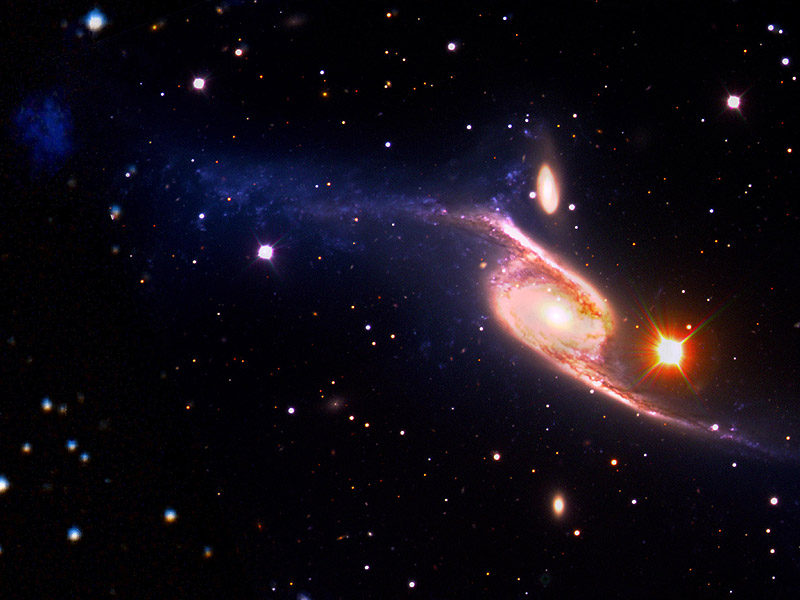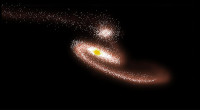This composite of the giant barred spiral galaxy NGC 6872 combines visible light images from the European Southern Observatory’s Very Large Telescope with far-ultraviolet (1,528 angstroms) data from NASA’s GALEX and 3.6-micron infrared data acquired by NASA’s Spitzer Space Telescope. (Image credit: NASA’s Goddard Space Flight Center/ESO/JPL-Caltech/DSS)
Home This composite of the giant barred spiral galaxy NGC 6872 combines visible light images from the European Southern Observatory’s Very Large Telescope with far-ultraviolet (1,528 angstroms) data from NASA’s GALEX and 3.6-micron infrared data acquired by NASA’s Spitzer Space Telescope. (Image credit: NASA’s Goddard Space Flight Center/ESO/JPL-Caltech/DSS) This composite of the giant barred spiral galaxy NGC 6872 combines visible light images from the European Southern Observatory's Very Large Telescope with far-ultraviolet (1,528 angstroms) data from NASA's GALEX and 3.6-micron infrared data acquired by NASA's Spitzer Space Telescope. (Image credit: NASA's Goddard Space Flight Center/ESO/JPL-Caltech/DSS)
This composite of the giant barred spiral galaxy NGC 6872 combines visible light images from the European Southern Observatory’s Very Large Telescope with far-ultraviolet (1,528 angstroms) data from NASA’s GALEX and 3.6-micron infrared data acquired by NASA’s Spitzer Space Telescope. (Image credit: NASA’s Goddard Space Flight Center/ESO/JPL-Caltech/DSS)



